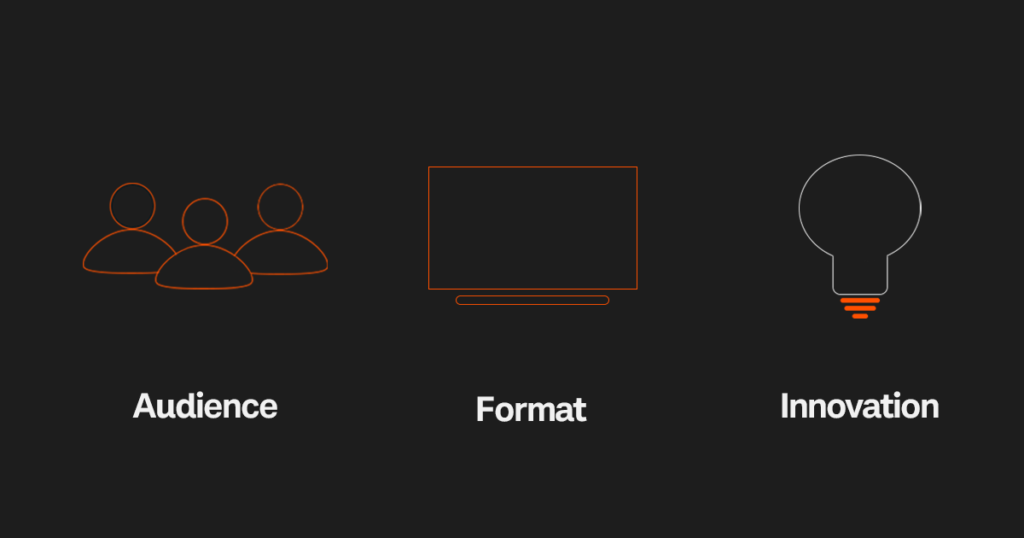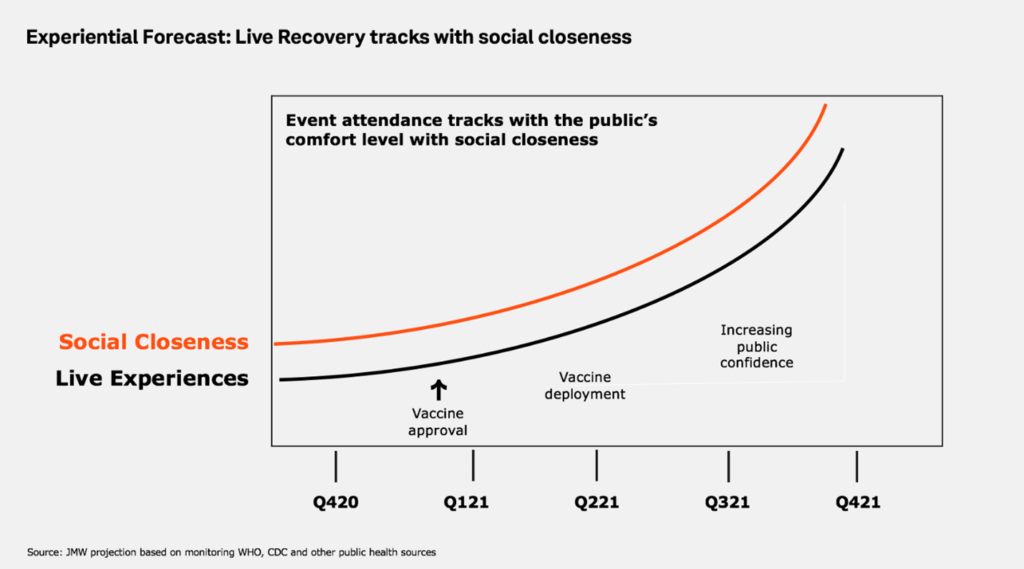Jack Blog
October 20th, 2020
In 2020, it would be safe to say that expecting the unexpected is quite common. Because most – if not all – plans have been either canceled, postponed or reimagined. Vacations became staycations. Homes became office spaces. Masks became the latest accessory.
In the land of brand experiences, it’s much the same. Live, in-person experiences went virtual. The days of packing thousands into a convention hall became a distant memory. And it will take time before we’re fully back in that space. Today, a large percentage of people are not comfortable attending a large event. COVID-19 vaccine availability, a decrease in cases and deaths and mandatory safety protocols (masks, forced social distancing) are all factors affecting how and when people are ready to dive back into live experiences. Brands are looking for guidance from public health officials and the reality is that the needle keeps moving – forecasting is unreliable. And as a result, virtual and hybrid experiences (ones that combine some live and digital elements) aren’t going away anytime soon. Especially in 2021. In fact, they will be mandatory.
So, as companies plan out their brand experiences, what are the key considerations?
A fixed and flexible planning model
No doubt, there is a lot of ambiguity about 2021. But we do know that businesses want and need to grow. They need to get into the hearts and minds of their key audiences and as the case was before, experiences are the way to make an indelible impression.
At the start of the pandemic, several brands opted to halt experiences. Many shied away from virtual options, convinced that in-person would be resurrected sooner rather than later. Almost a year later, staying quiet is no longer an option. Brands need to take back control of experiences and embrace new formats or they will fail to thrive.
So moving forward, we will continue to expect the unexpected. But by employing a model that is both fixed and flexible, it will enable brands to succeed as we head into 2021.
What does this model look like?

Fixed: Objectives are key. Brands need to know what they want to achieve as a business. Especially who their audience(s) are, and how they’re going to measure success. How it all comes to life is determined after analyzing and assessing the variables – health (COVID-19), cultural and geographic/environmental will all influence the plan.
Flexible: Embracing adaptability is critical. We’ll need to plan for primary and secondary experiences, based on variables. This type of experience design allows for built-in contingencies, so over time, experiences can be augmented rather than be canceled.
So, how do we fuel this model?

Three key areas are pivotal: Audience, Format and Innovation.
Let’s explore audiences in more depth.
First and foremost, we’re all human
Whether you call them your audience, targets, or demographics, they are all humans. And yes, they expect you to treat them as such.
This year has taught us many lessons – one being, we’re more ourselves than ever before. With colleagues and clients seeing the insides of our homes during conference calls, and kids popping in to say hi (or asking for a snack), our work and home lives are no longer separate entities. More people are seeing who we authentically are – as humans. Brands must take note.
So, while people are showing their truest selves, brands need to as well. Showing more of their purposeful side. Because people are burnt out (53% in the US are, due to increased screen time) – so when they engage with a brand, they want it to add value and meaning to their life. Brands need to use this as an opportunity to craft deeper engagement through the experiences they deliver.
Today’s audiences aren’t just embracing authenticity. They are also grasping to hope. But they aren’t quite there yet. They are hopefully challenged. The environment is still unpredictable, but they know there is a light at the end of the tunnel. Brands need to embrace this mindset as well.
Over time, as more solutions and protections are in place, people will become more comfortable. Social closeness will emerge again. We’ll begin to see a shift from nearly all virtual experiences, to a mix of hybrid and eventually, physical experiences will come back into play.

So, while the brand experiences delivered in this new world will manifest themselves in new environments and formats, employing a customer-centric approach with an ‘audience first’ mindset is crucial for designing memorable experiences in the next year.
Watch our webinar to learn more about planning the future of brand experiences in 2021.